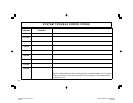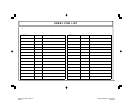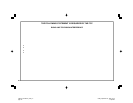
32
WARNING! THE LIMITATIONS OF THIS ALARM SYSTEM
While this system is an advanced design security system, it does not offer guaranteed protection against burglary or fire or other
emergency. Any alarm system, whether commercial or residential, is subject to compromise or failure to warn for a variety of
reasons. For example:
• Intruders may gain access through unprotected openings or have the technical sophistication to bypass an alarm sensor or
disconnect an alarm warning device.
• Intrusion detectors (e.g. passive infrared detectors), smoke detectors, and many other sensing devices will not work without
power. Battery operated devices will not work without batteries, with dead batteries, or if the batteries are not put in properly.
Devices powered solely by AC will not work if their AC power supply is cut off for any reason, however briefly.
• Signals sent by wireless transmitters may be blocked or reflected by m etal before they reach the alarm receiver. Even if the
signal path h as been recently checked during a weekly test, blockage ca n occu r if a metal object is moved into the path.
• A user may not be able to reach a panic or emergency button quickly enough.
• Passive Infrared Motion Detectors can only detect intrusion within the designed ranges as diagrammed in their installation
manual. Passive Infrared Detec tors do not provide volume tric area prote ction. They do create multiple beams of pr otection,
and intrusion can only be detected in unobstructed areas covered by those beams. They cannot detect motion or intrusion
that takes place behind walls, ceilings, floors, closed doors, glass partitions, glass doors, or windows. Mechanical tampering,
masking, painting or spraying of any material on the mirrors, windows or any part of the optical system can reduce their de-
tection ability. Passive Infrared Detectors sense changes in temperature; however, as the ambient temperature of protected
area approaches the temperature range of 90° to 105°F (32° to 40°C), the detection performance can decrease.
• Alarm warning devices such as sirens, bells or horns may not alert people or wake up sleepers if they are located on the
other side of closed or partly open doors. If warning devices sound on a different level of the premises, then they are less
likely to alert all people. Persons may not hear the warning if the alarm is m uffled from a stereo, radio, air conditioner or other
appliance, or by passin g traffic. Finally, alarm warning devices, however loud, may not warn hearing-impaire d people.
• Telephone lines needed to transmit alarm signals from a prem ises to an al arm m on ito ring c ente r m ay be out of s erv ice
or temporarily out of service. Telephone lines are also subject to compromise by sophisticated intruders.
- Continued over
F-64TPG_OI320A.03_USER_2...
page 32
Friday, September 15, 2006 11:40
Composite


















